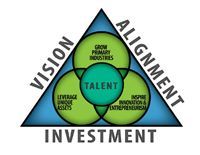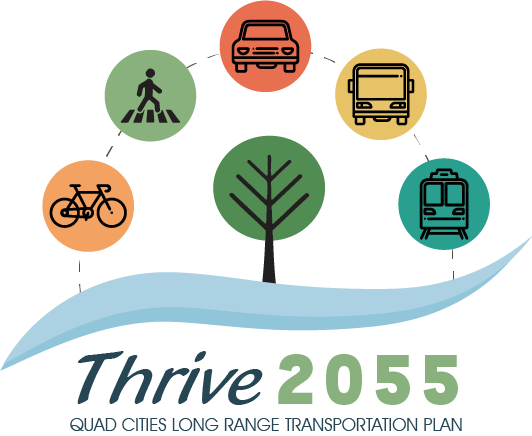- Details
- Written by: Sarah Grabowski
- Category: Transferred From Old Site
- Hits: 12277
December 18, 2013 – The 2014 Illinois Community Development Assistance Program (CDAP) grant application due dates for competitive programs have changed to June 2, 2014. This is a date change for the program , grants were previously due in February.
CDAP is a grant program funded through the U.S. Department of Housing and Urban Development (HUD), that assists Illinois communities by providing grants to local governments to help them in financing economic development projects, public facilities, and housing rehabilitation. The program is targeted to assist low-to-moderate income persons. Those eligible to apply are units of general local government such as cities, villages, townships, and counties. Local governments must have populations of 50,000 or less and must not be located in the 38 cities that receive federal "entitlement" funds. Moline and Rock Island, Illinois are entitlement cities in the Bi-State Region. Communities must meet the 51% LMI for their project area (which can be the entire community or specified area).
- Details
- Written by: Sarah Grabowski
- Category: Transferred From Old Site
- Hits: 12516
December 18, 2013 – Illinois Public Acts 97-905 and 98-109 were passed in 2012 and 2013 by the Illinois General Assembly. These laws combine to make significant changes to the way enterprise zones are awarded and administrated in Illinois. Enterprise zones were first established in Illinois in 1983 to stimulate economic growth by providing tax incentives and regulatory relief to businesses opening or expanding in specially designated areas. To date, 97 enterprise zones have been authorized by the State of Illinois.
- Details
- Written by: Sarah Grabowski
- Category: Transferred From Old Site
- Hits: 10475

February 26, 2014 – Jerry Taylor, Dispatch-Argus Publisher, and Tara Barney, Quad Cities Chamber of Commerce President and CEO, provided an overview of a visioning effort involving over 100 businesses and investors in the greater Quad Cities Region. The Regional Opportunities Council has worked to assemble a regional vision for 2030 that identifies and advances opportunities for transformative growth in the greater Quad Cities Region.
- Details
- Written by: Sarah Grabowski
- Category: Transferred From Old Site
- Hits: 9268
February 26, 2014 – Mark D. Hunt, Economic Development/Public Safety Manager, updated the Commissioners on the status of the Investing in Manufacturing Communities Partnership (IMCP) grant, which was jointly received by the Commission and Quad Cities Chamber of Commerce in the fall of 2013. The grant award provides $162,500 in planning assistance funds from the Department of Commerce, Economic Development Administration to create an implementation plan for a regional Metal and Multi-Materials (M3) Innovation Hub. The grant is matched by $162,500 in local funds provided by public and private sector entities.
- Details
- Written by: Sarah Grabowski
- Category: Transferred From Old Site
- Hits: 9252
February 26, 2014 – The Bi-StateDrug and Alcohol Testing Consortium (DATC) was formed to offer drug and alcohol testing services to member employees in the Bi-State Region. Federal Transit Administration (FTA) and Federal Motor Carrier Safety Administration (FMCSA) establish regulations that require commercially-licensed (CDL) drivers to participate in drug and alcohol testing to promote traffic safety in the transportation industry. DATC participants include municipalities, counties, townships, public school districts, public transit systems, and not-for-profit corporations that provide transportation in the geographic area of Muscatine and Scott Counties, Iowa and Henry, Mercer, and Rock Island Counties, Illinois.
- Details
- Written by: Sarah Grabowski
- Category: Transferred From Old Site
- Hits: 8668
February 26, 2014, March 26, 2014 –
April 23, 2014 — 4:00-7:00 p.m.
I Wireless Center 1201 River Drive, Moline, IL
April 24, 2014 — 4:00-7:00 p.m.
Waterfront Convention Center, 2021 State Street, Bettendorf, IA
- Details
- Written by: Sarah Grabowski
- Category: Transferred From Old Site
- Hits: 8717
January 22, 2014 – A status report by the Illinois Department of Transportation on implementing passenger rail service from Chicago to Quad Cities was given by Joe Shacter, Director of Public and Intermodal Transportation. He provided an update based on the status of engineering to date. Phase I of the effort is 79 mph service with two round trips daily (four trains per day) between Chicago and the Quad Cities. Intermediate stops are planned for La Grange, Naperville, Plano, Mendota, Princeton and Geneseo. Phase II is the extension of that service to Iowa City which will depend on how the State of Iowa proceeds.
Mr. Shacter reiterated that Phase I - Chicago to Quad Cities has 30% engineering completed and procurement of rolling stock is underway as well as establishing construction, maintenance and service agreements between the appropriate responsible parties. Key project partners include the Federal Railroad Administration, Amtrak, Burlington Northern Santa Fe (BNSF) and Illinois Commerce Commission, among some of the stakeholders. The DOT is working with the ICC on rail signals and gates at crossing. Analysis also includes structure and rail diagnostics for determine existing conditions. Additional efforts to develop stations in Geneseo and Moline are in progress.
In 2010, both DOTs submitted a grant to the Federal Railroad Administration and were awarded $230 million. Of this, $177 million has been committed to Illinois for Phase I and $53 million has been committed to Iowa for Phase II. Based on the revised costs, it is anticipated that Illinois will need $78 million to match the project, up from $45 million. A layover facility will need to be included in the Illinois project since there has been no decision to move forward by Iowa. Between Rock Island and Silvis, a second mainline is being added as well as other sidings, signaling and positive train control.
Mr. Shacter indicated that the project completion goal is late 2015. The ILDOT will have a more definitive timeline within a few months. The presentation was followed by comments and questions by Commissioners.
- Details
- Written by: Sarah Grabowski
- Category: Transferred From Old Site
- Hits: 9612
January 22, 2014 – William Takakoshi with Hurt, Norton & Associates, Inc. presented information on legislative efforts and issues related to the Rock Island Arsenal. Hurt, Norton has been working for the Quad Cities Area on Arsenal issues since 1998 and has assisted with many legislative issues amounting to over $100 million in accomplishments.
Mr. Takakoshi recommended thanking the legislators that serve the Bi-State Region and their staff for the items that support the Arsenal in the FY 2014 Omnibus appropriations bill and the FY 2014 National Defense Authorization Act(NDAA). The knowledge of funding levels over 2014 ($520 billion) and 2015 ($521 billion) allows the Department of Defense to plan as opposed to dealing with continuing resolutions. In addition, $150 million was provided for Industrial Mobilization Capacity for arsenals in the United States. However, a 20% cut to all Army headquarters was announced months ago. It is not known what will make up the 20% cut, but likely all segments of the Army will be touched, and these cuts will impact employment on the island.
He emphasized the importance of Senator Durbin’s position as Chairman of the Senate Defense Subcommittee. This position has been key historically in the Pentagon, and the senator's knowledge of the Arsenal will be helpful. He noted Congressman Loebsack is on the House Armed Services Committee. Representative Frelinghuysen of New Jersey was recently appointed Chairman of the House Defense Subcommittee. Representative Frelinghuysen represents Picatinny, New Jersey and has been a champion of the Picatinny Arsenal. This change makes Senator Durbin’s position even more important to balance Department of Defense decisions.
The Arsenal Support Program Initiative(ASPI) promotes the commercial use of underutilized capacity at arsenal facilities by partnering with private sector partners. The program is sunsetting so companion language is needed to maintain the existing partnerships leasing space on the Arsenal. He also noted the Rock Island Arsenal Joint Manufacturing & Technology Center is important to protecting the Island from Base Realignment and Closure (BRAC) because the factory would be difficult to move to another location. However, he does not believe a BRAC will occur until 2017 following the 2016 presidential election.
- Details
- Written by: Sarah Grabowski
- Category: Transferred From Old Site
- Hits: 8811
January 22, 2014 – Plans are moving forward for the acquisition of GIS-quality digital aerial photos and other products across the Bi-State Region in the spring of this year. Staff have been working with local jurisdictions to coordinate coverage areas and products in this joint effort. Consortium members have selected Kucera International, out of Willoughby, OH to provide aerial mapping services for the project. Participants include: (IA) Clinton, Mercer, Muscatine & Scott Counties and (IL) Henry County and the cities of Aledo, Carbon Cliff, Coal Valley, East Moline, Milan, Moline, Port Byron, Rock Island, and Silvis. Products include digital color orthophotography, LiDAR, digital elevation models, digital terrain models, contours, and planimetric mapping. Staff coordinated similar multi-jurisdictional efforts in 2005 and 2009. Participants anticipate a 25–40% cost savings by coordinating the flight and purchasing aerial products together.
Watch the sky for the planes collecting imagery. They’ll be in the air between mid-March and mid-April, when the snow has melted, there is no flooding, and no leaf cover. Think spring! For more information, contact Lisa Miller, Data/GIS Director at 309.793.6302, ext. 133 or
- Details
- Written by: Sarah Grabowski
- Category: Transferred From Old Site
- Hits: 9205
December 18, 2013 – New figures were released by the Iowa Department of Transportation on the cost of implementing passenger rail service from Chicago to Iowa City. Tammy Nicholson, Office of Rail Transportation Director with the Iowa Department of Transportation provided an update based on the completion of an analysis by HDR consultants released in early December. Ms. Nicholson noted that there is a joint effort between Iowa and Illinois to implement rail service between Chicago and Iowa City. Phase I of the effort is 79 mph service with two round trips daily between Chicago and the Quad Cities. Phase II is the extension of that service to Iowa City.
Phase I - Chicago to Quad Cities has 30% engineering completed and in the process of procuring rolling stock and establishing construction, maintenance, and service agreements between the appropriate responsible parties. Additional efforts to develop stations in Geneseo and Moline are in progress. Illinois DOT is tentatively scheduled to present at the next Commission meeting with a more detailed status on Phase I.
In Phase II, the IADOT has completed the conceptual engineering work, environmental analysis, ridership and revenue forecasts and developed new cost estimates based on this work. The revised cost of the effort is now estimated at $125 million. In 2010, both DOTs submitted a grant to the Federal Railroad Administration (FRA) and were awarded $230 million. Of this, $177 million has been committed to Illinois for Phase I and $53 million has been committed to Iowa for Phase II. Based on the revised costs for Phase II, it is anticipated that Iowa will need $72 million in matching funds. This is up substantially from the original $21 million anticipated. Major changes affecting these increases are:
· Increased construction costs due to project delay
· Need for additional infrastructure to accommodate current and future growth on Iowa Interstate Railroad
· Changes in FRA policy requiring the project be constructed for a 20-year life
· Reduced request of the original grant to Iowa.
On a positive note, it is estimated the net operating cost would be lower based on the incremental share of the Quad Cities-Iowa City portion of the route, which is estimated at $600,000 annually pending negotiations with Illinois. The original estimate was $3 million annually.
To move the project forward, the next steps would be to conduct preliminary engineering and additional environmental work. Without a commitment from the State, the $53 million in FRA funds is at risk of being withdrawn. Commissioners voted to direct staff to prepare a letter to the Governor and copied to legislators reiterating the Commission's support for passenger rail and encouraging legislative action in the 2014 session to secure the $53 million in Federal Railroad Administration funding.


